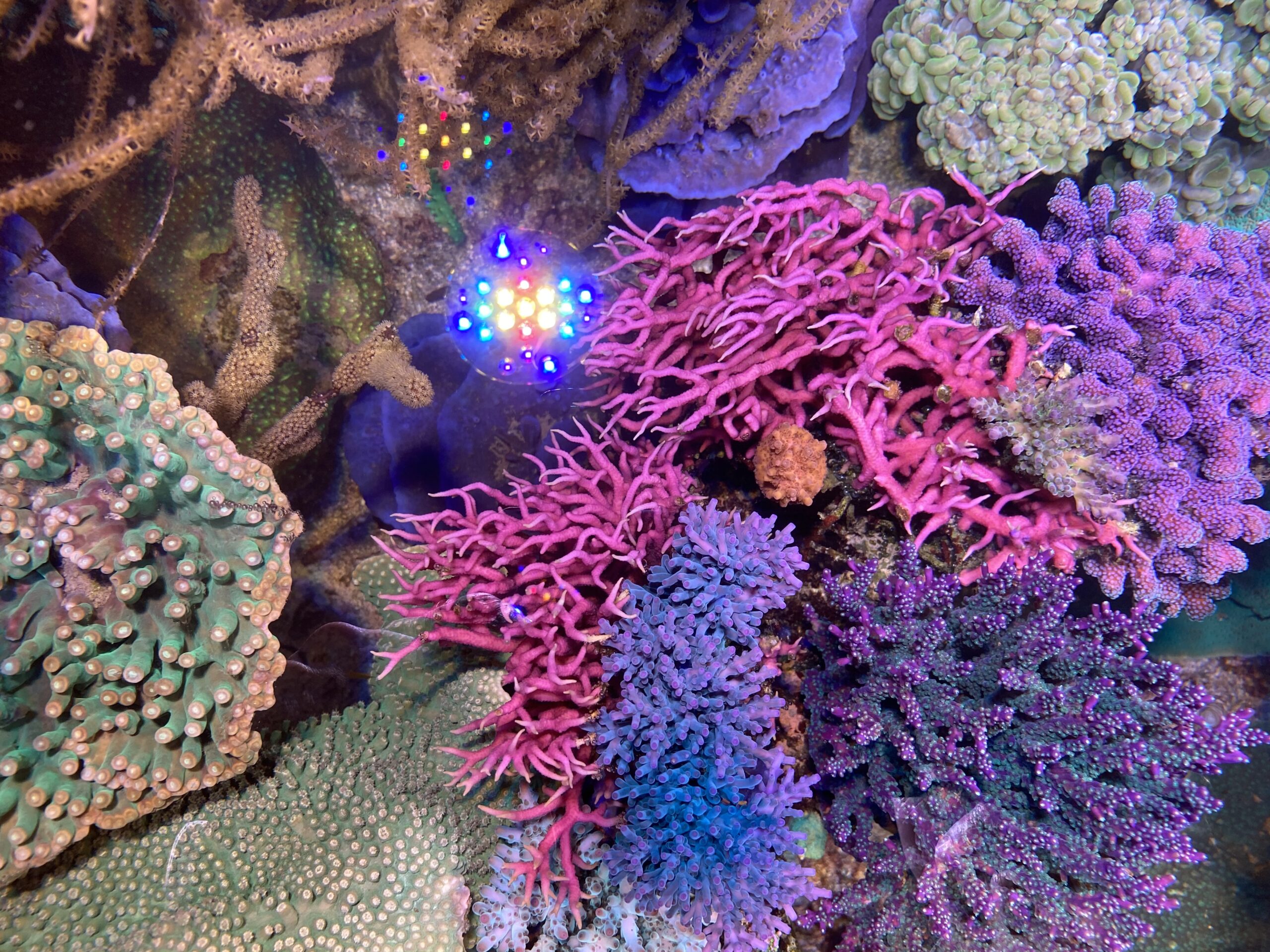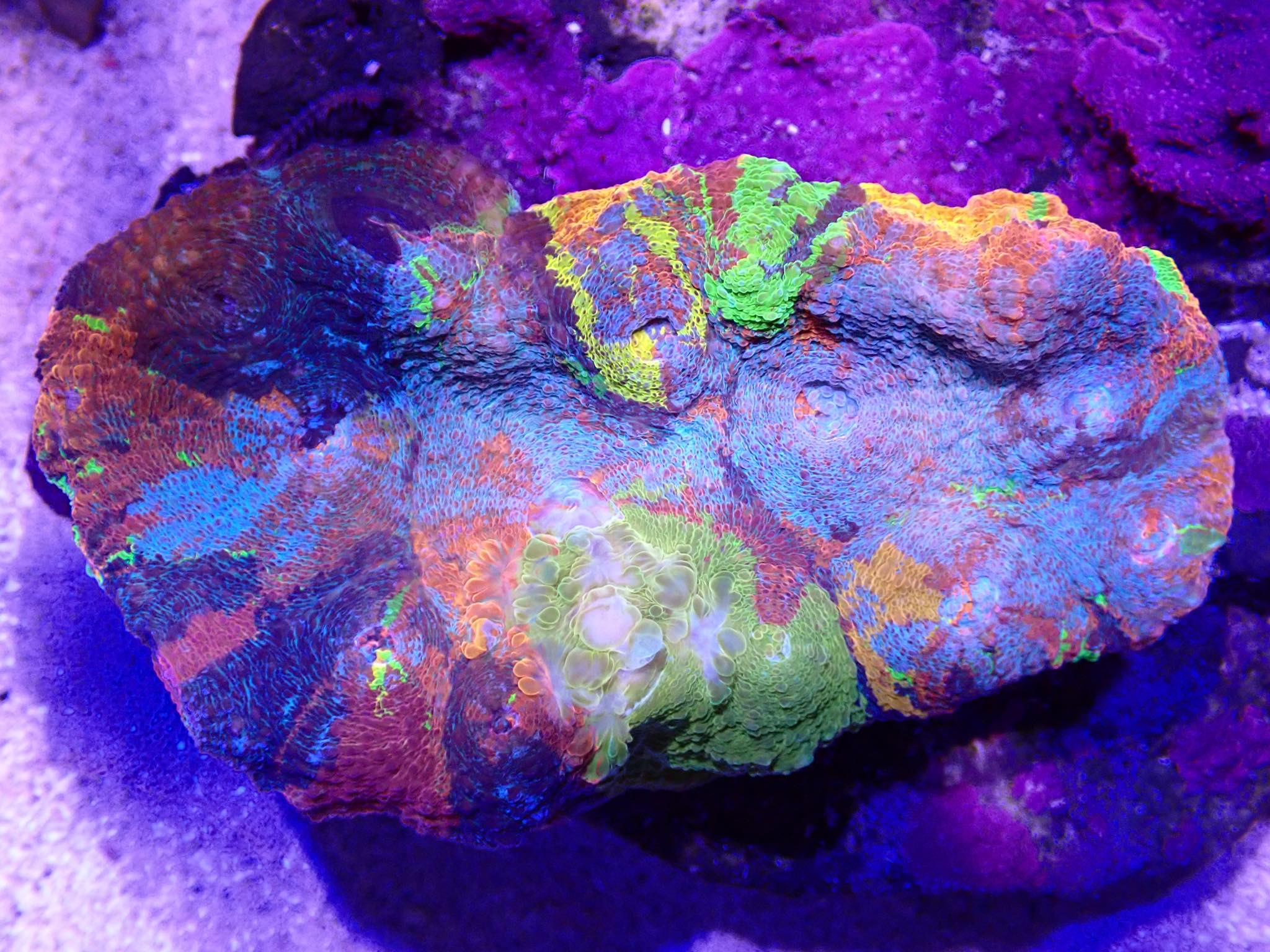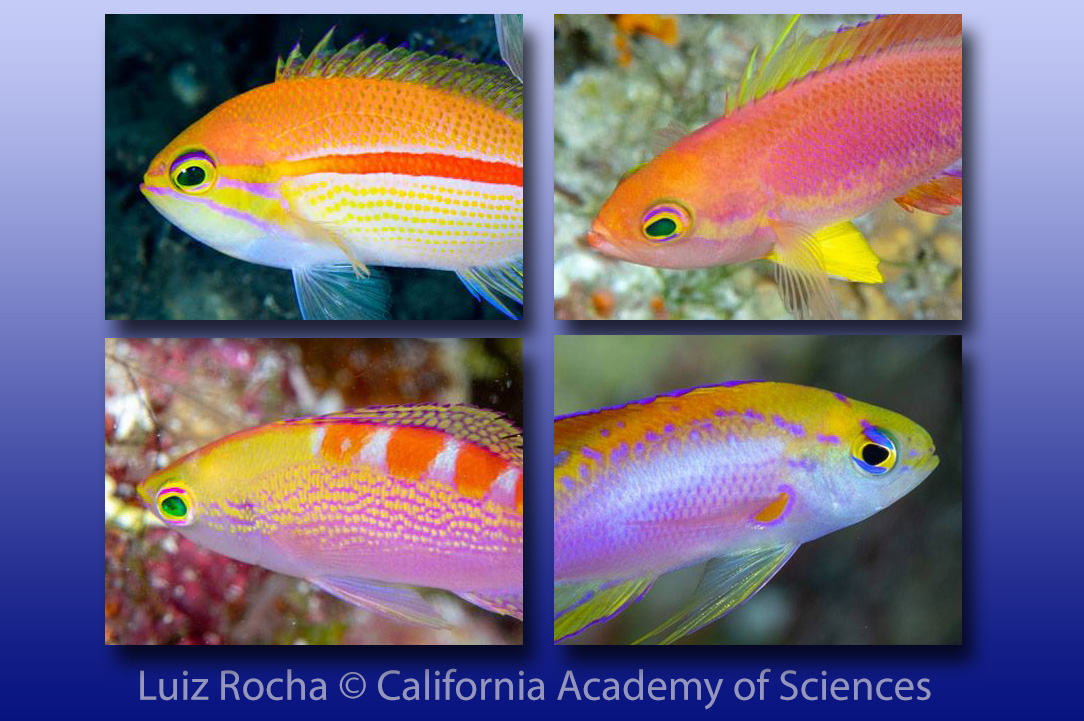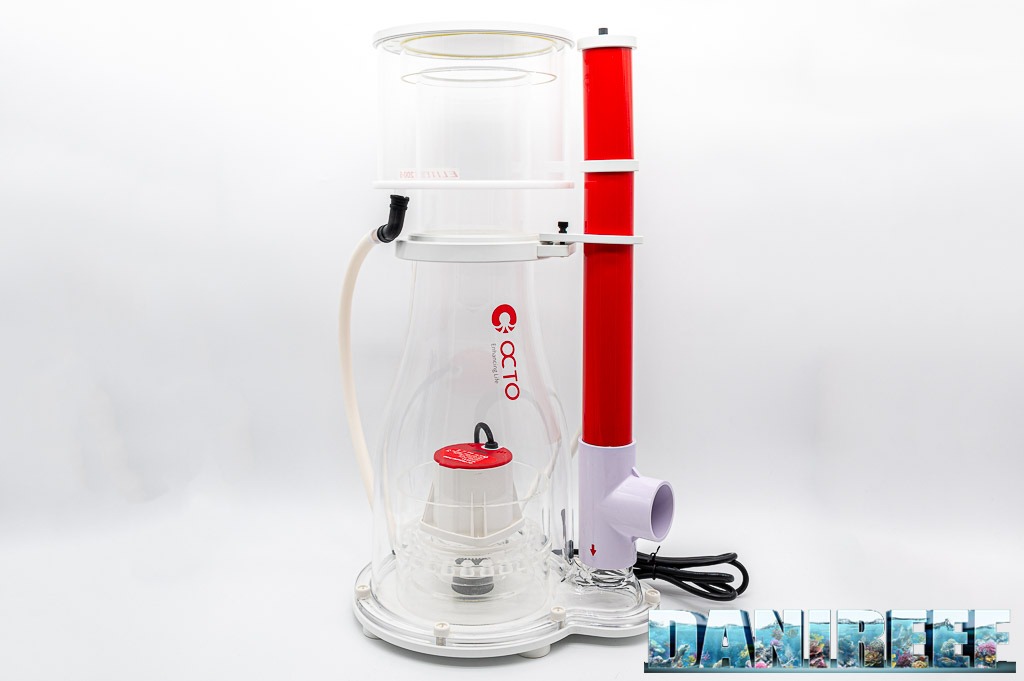There are few universal things in this hobby, as every tank is different and how every tank is managed is different as well. But there are a few such as the need for being patient, and there being no benefit to chasing numbers and that nothing good happens fast in a reef tank. And unfortunately, there is one that we all share: there is always something.
Whether you are starting out or have been doing this for decades there literally will always be something that will go wrong or just drive you crazy. It can be a prized fish jumping through the tiniest crack or a rare frag falling behind everything to be lost, there is seemingly always something that will frustrate, annoy, or perplexe us.
All of the somethings described below have occurred to me or my friends, and while some may be funny now, when they occurred, they were frustrating and irritating. Writing them all down confirmed how the law of unintended consequences affects this hobby. By that I mean we do one thing and as a result, something else totally unexpected happens. Hopefully sharing these experiences will help to keep them from happening to anyone else.
Bryopsis outbreak
In the first example, a series of missteps occurred after a tank had a major outbreak of Bryopsis, which can happen to anyone. As usual, the standard steps to remove it were undertaken including lowering the nutrient levels, a total tank blackout, and water changes all to no avail. Eventually, Fluconazole was tried and the Bryopsis all disappeared in three days.
One week after all of the Bryopsis was gone, the tank had an unusually high level of phosphate, with a reading of 1.4ppm, yes that number is correct. When this number was determined to be the same on several tests, an attempt was made to bring it down. In order to reduce it quickly, which was wrong, lanthanum chloride was employed and within two days the phosphate level was back down to .05ppm.
Interestingly, this was done despite there being no algae in the tank at this time. Within a week of this rapid drop in phosphate, the tips of many of the sps corals turned white, indicating that growth had stopped. Three days after the corals showed white tips, the alkalinity level in the tank went from 8.4 to over 14. Two weeks after this alkalinity spike an outbreak of Slow Tissue Necrosis (STN) occurred and one-third of the large coral colonies in the tank perished.
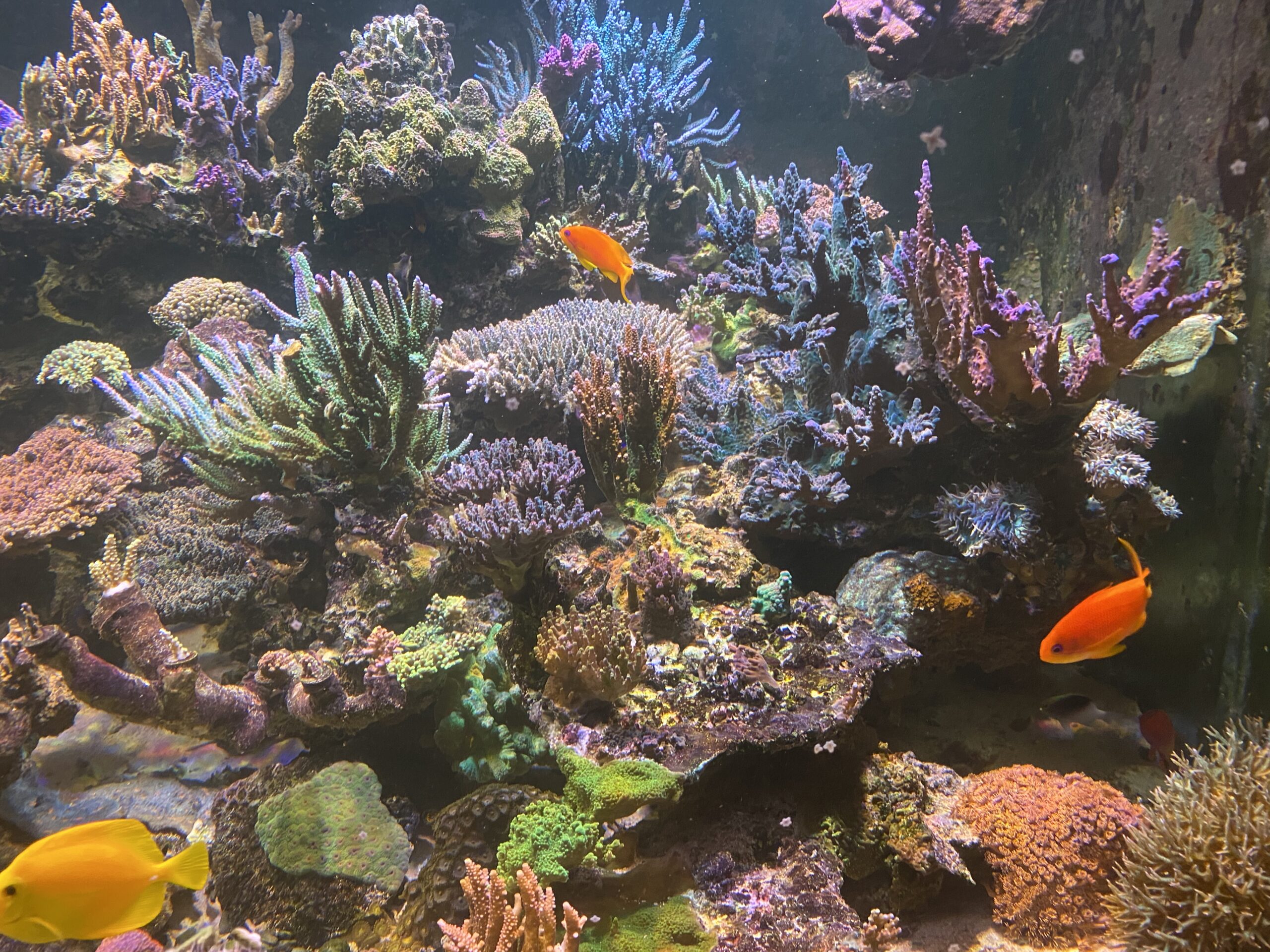
This series of accidents is a prime example of it’s always something. Looking at the whole series of events in retrospect, it is now clear what happened. The Bryopsis once it took off, was consuming much of the phosphate that was present in the tank. Once it was eradicated there no longer was anything to consume it, so the levels rose quickly. In the haste to bring it down, the level was dropped too quickly and the corals which had grown accustomed to significant phosphate being present could not deal with the rapid loss of this nutrient and as a result, stopped growing.
Once their growth was retarded the corals no longer required the high amount of buffer that was being introduced regularly, and as a result, there was an alkalinity spike. This spike stressed the corals, and as a result, they could not battle the bacteria that lead to STN so this malady took off and killed numerous colonies.
This series of unfortunate incidents highlights why everything should be done slowly in a reef tank and even when numbers are bad, their adjustment should be done slowly and with an understanding of what changing them can do to the tank’s inhabitants.
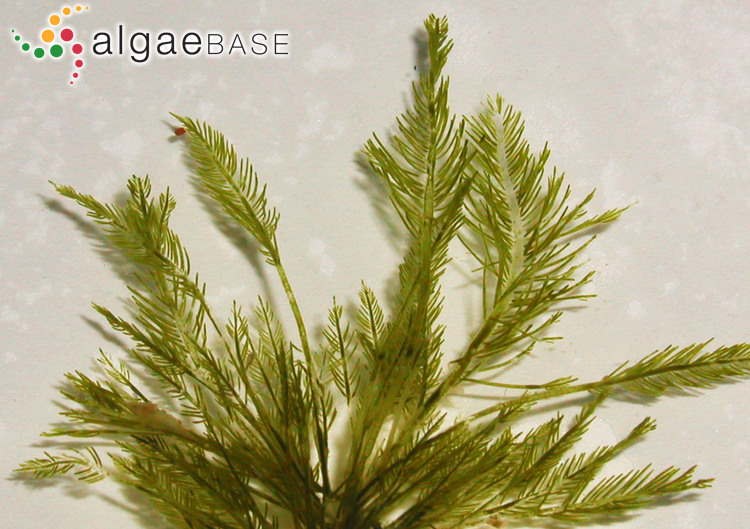
Non “Reef-Safe” fish
Another “It’s Always Something’ occurrence unfortunately often happens to a lot of us, at least the first part of it. A beautiful new fish was introduced into a tank, after the owner had done their research and found that the fish was supposedly reef-safe. All was good for six months and the fish thrived and grew. At the six-month mark, the owner started to have some problems with some of the corals in the tank.
First, the LPS corals started to seemingly disintegrate and disappear overnight and then bite marks and other signs of damage began to appear on the sps corals. Since the owner was only viewing the tank when he was feeding it, he did not see any of the fish causing any damage, so he assumed that some pest was causing the problems.
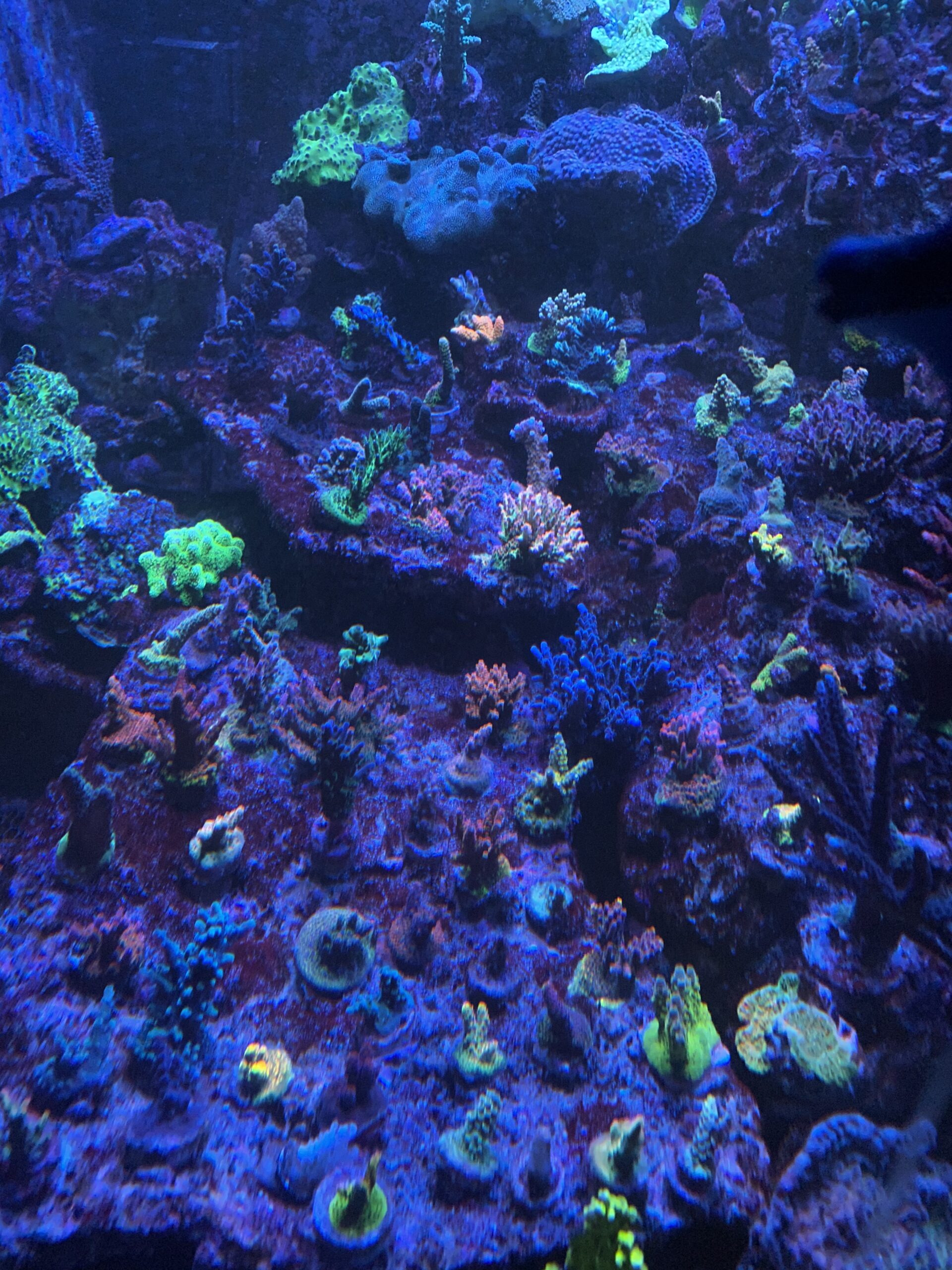
Fortunately, when he spent time just observing the tank after the fish realized they were not being fed acted normally. After observing the tank he quickly realized that the Declivis butterfly that had been safe and ate all of the prepared foods that were added had become fond of the corals as well, and it was the culprit in causing the demise of the corals. So the fish had to be removed, which took almost 6 hours, so from that he learned to only add fish that are definitively reef safe. But even these can turn into bad actors, so this needs to be kept in mind.
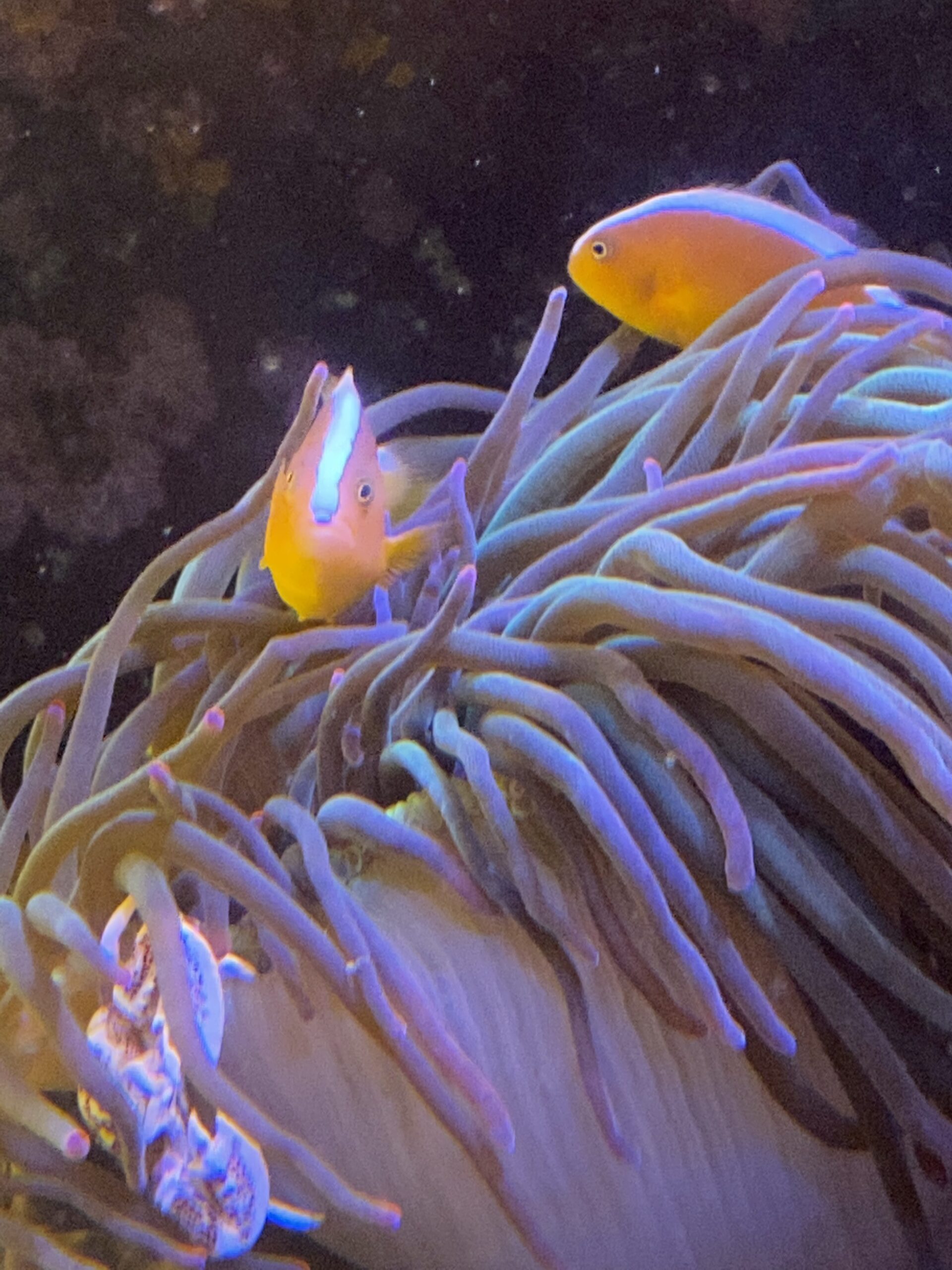
Mystery fish wipeout
Another something moment occurred after a tank was thriving, so the owner decided to upgrade to a larger tank. In this instance of unintended consequences, the results were quite serious. For this tank upgrade the soft corals had grown to such a degree that the owner had decided to move them from a 120-gallon tank to a 300-gallon tank in the same spot. Since this tank was in a business office, he wanted to do this as quickly as possible, so he enlisted any staff members who wanted to help.
The plan was that large plastic containers would be filled with prepared saltwater to go into the new tank, and additional containers would be filled with the water from the tank and then the corals and fish would be removed from the tank and placed in these boxes. Then the old tank would be taken down and the new tank would be put in place. The new equipment was purchased after it was determined what old equipment would be salvaged so everything was in place to do this quickly. It was thought that this process would take between eight and ten hours so it was decided to do this on a Saturday, so that the office would not need to be shut down.
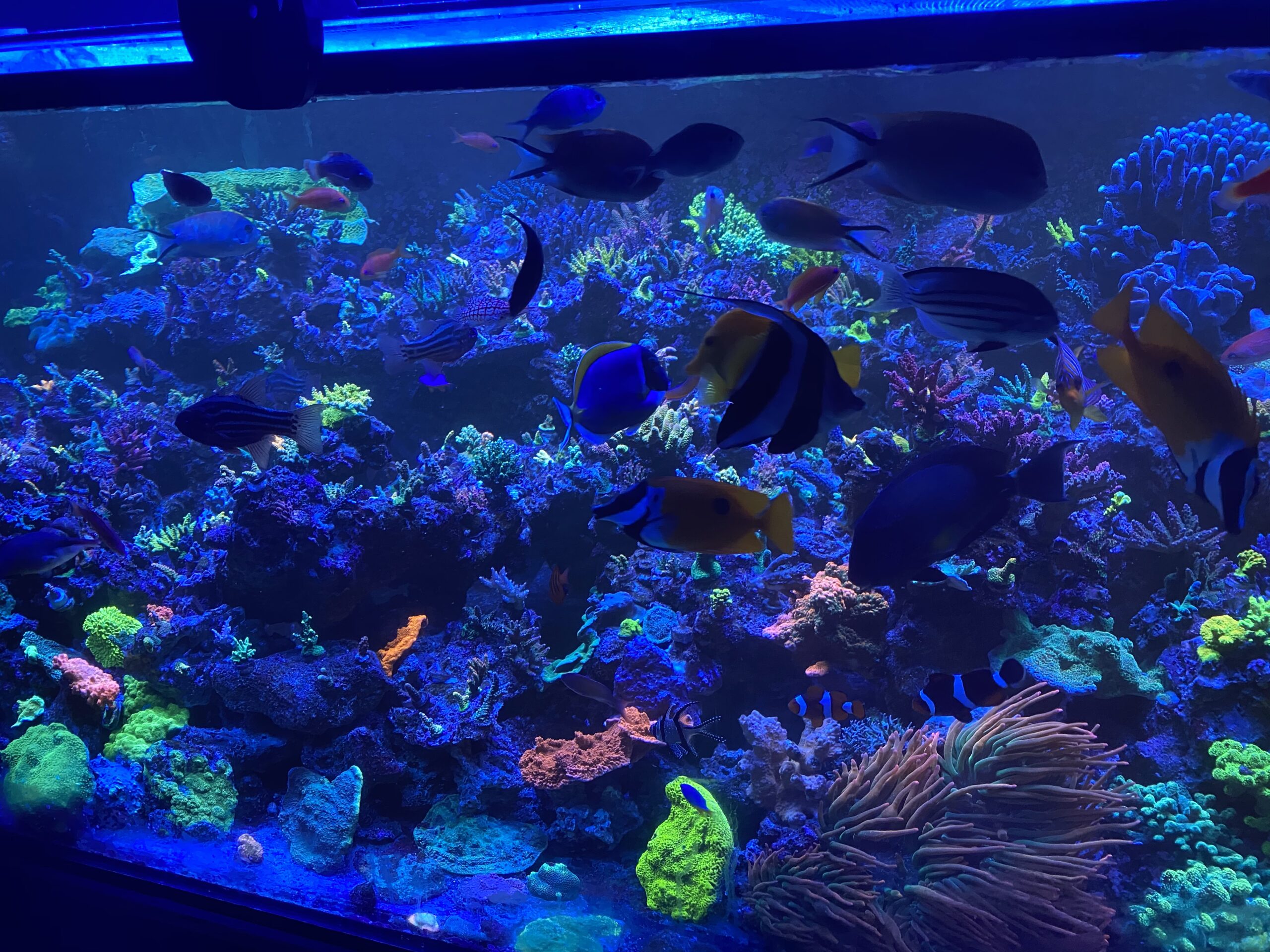
Eight employees from the office came in bright and early on Saturday morning, as did the two people who helped set up and maintain the original tank. Water was quickly drained from the display tank into the containers and once the water levels were sufficient, the soft corals including Sarcophytons, Lobophytons, Sinularias, Zooanthids, Palythoas, Clavularia, Mushrooms, and anemones were taken from the tank and placed in the containers. Once the tank was devoid of corals the live rock was removed, cleaned, and placed in its own container.
After this cleaning, the tank was free of any hiding places or obstructions, so the fish were easily removed and placed in their own container. Then the remaining water was removed, the filtration and related equipment taken apart and the tank and stand were moved. This whole process owing to the number of people working on it took less than two hours. Then the new tank and stand were put into place, the sump and filtration equipment were set up and the tank was refilled with the new and old water.
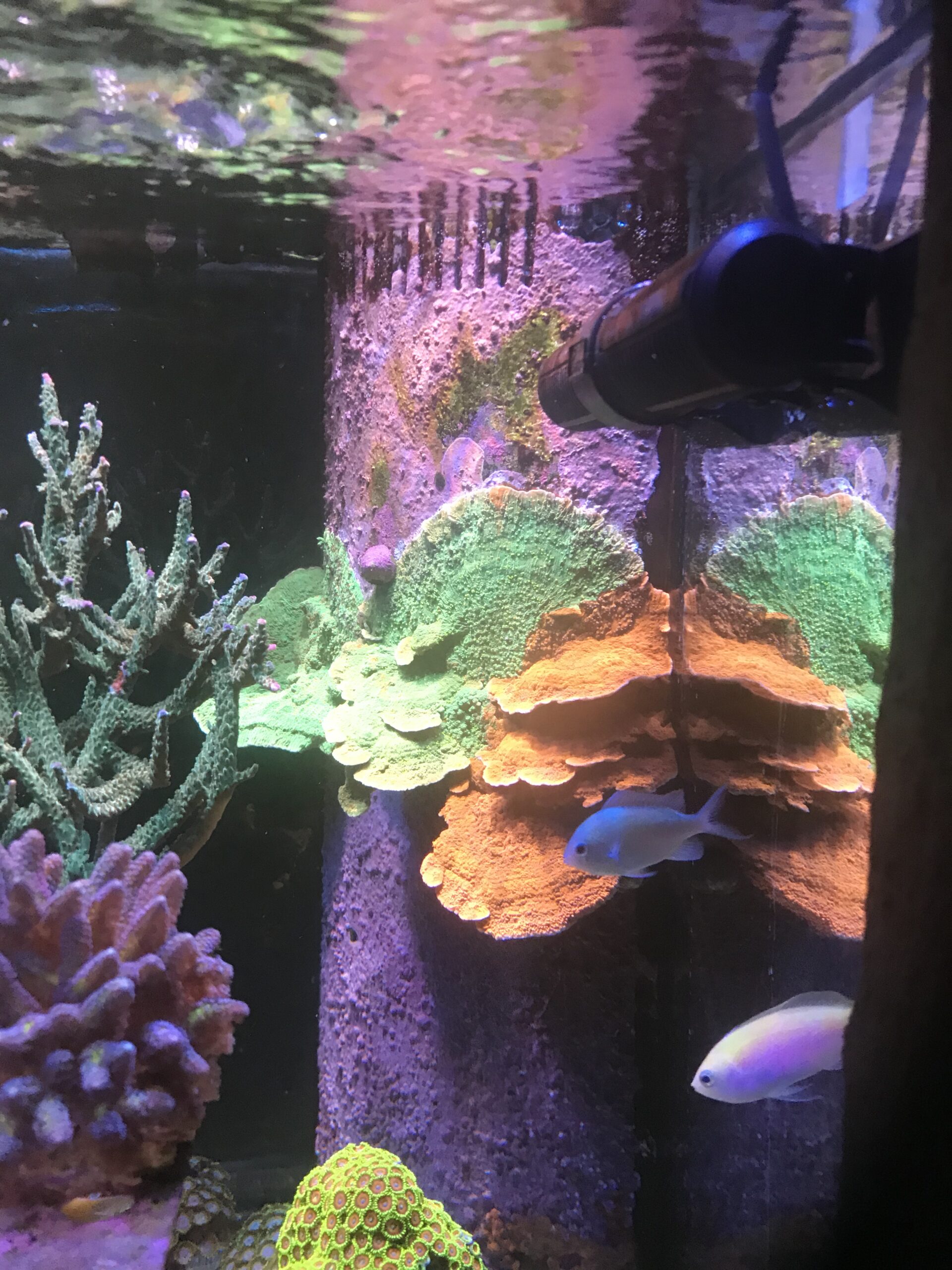
The freshly cleaned live rock was then set in place and all of the corals were quickly taken from their containers and placed in their new home with plenty of space between them allowing plenty of space for them to grow. Lastly, the fish were added, most of which were at least five years old, and the remaining equipment was added, and everything was turned on and tested.
Amazingly this rebuilding only took an additional four hours, so the entire process of moving an entire 120-gallon tank to a 300-gallon tank took around six hours. Everyone was happy as the thought was that this rapid switchover produced little stress on the animals and since everything looked “happy” there were no issues and the move was a success.
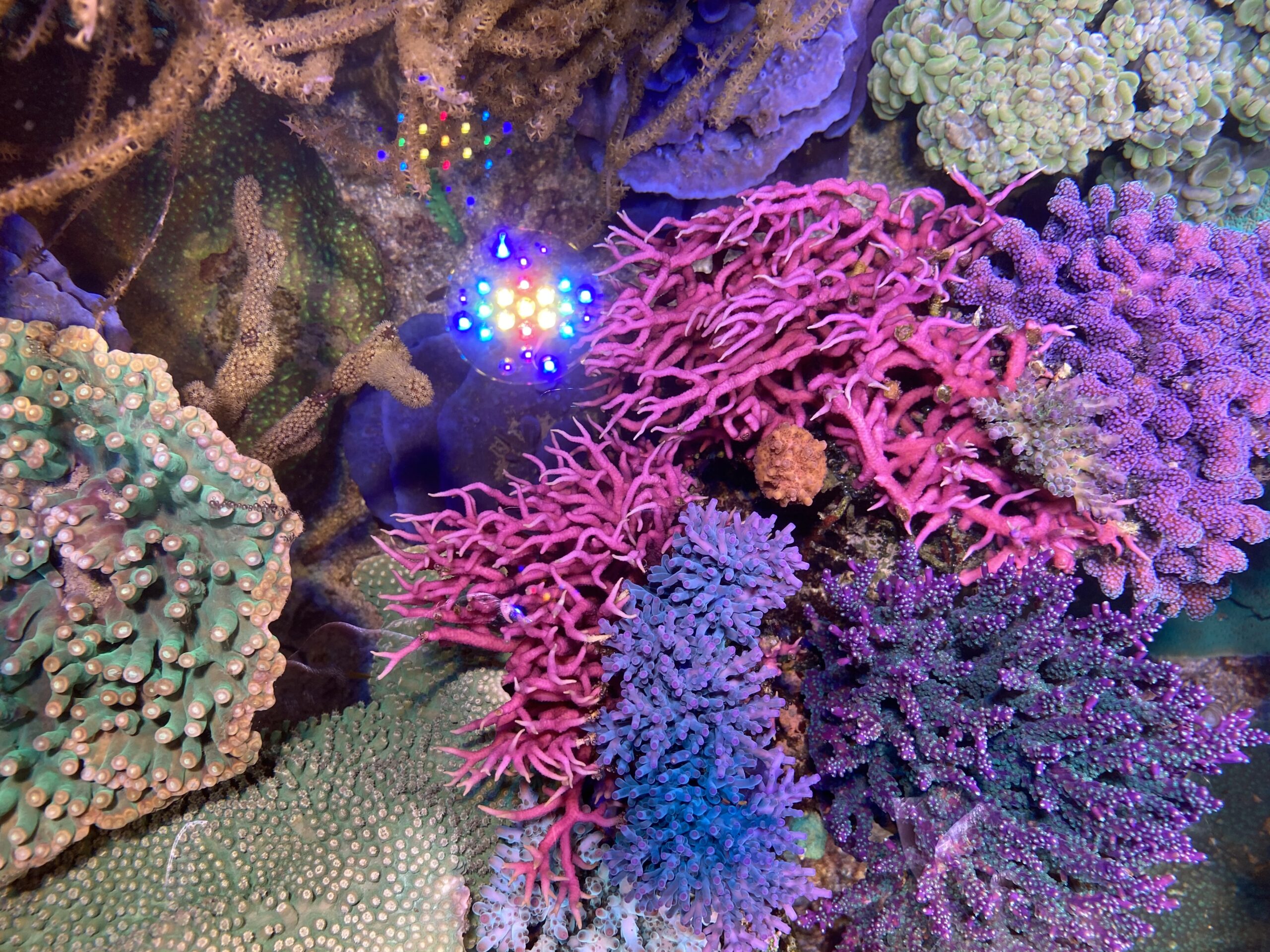
When everyone left that night, after cleaning up, all of the corals and fish looked good, so the thought was that all of this help had indeed paid off. The next morning was a different story, as when the tank was checked, it was immediately apparent that something was wrong, as all of the fish were dead, the skimmer was going nuts and there was a strange smell coming from the tank. Not a single fish had survived. The maintenance guys were called, and the dead fish were quickly removed with nets and by hand. There were over 40 dead fish in all in the tank.
The thought was that the fish had been more stressed by the move than was thought, even though the new and old water were matched for salinity, alkalinity, and temperature. The new water had been allowed to sit for over a week so that it would not be caustic. Also, this did not make sense as all of the corals looked fine. A 25% water change was then done along with the addition of a significant amount of carbon. The next day the tank had seemingly settled down as there were no mortalities among the corals or anemones and the tank looked great, sans fish.
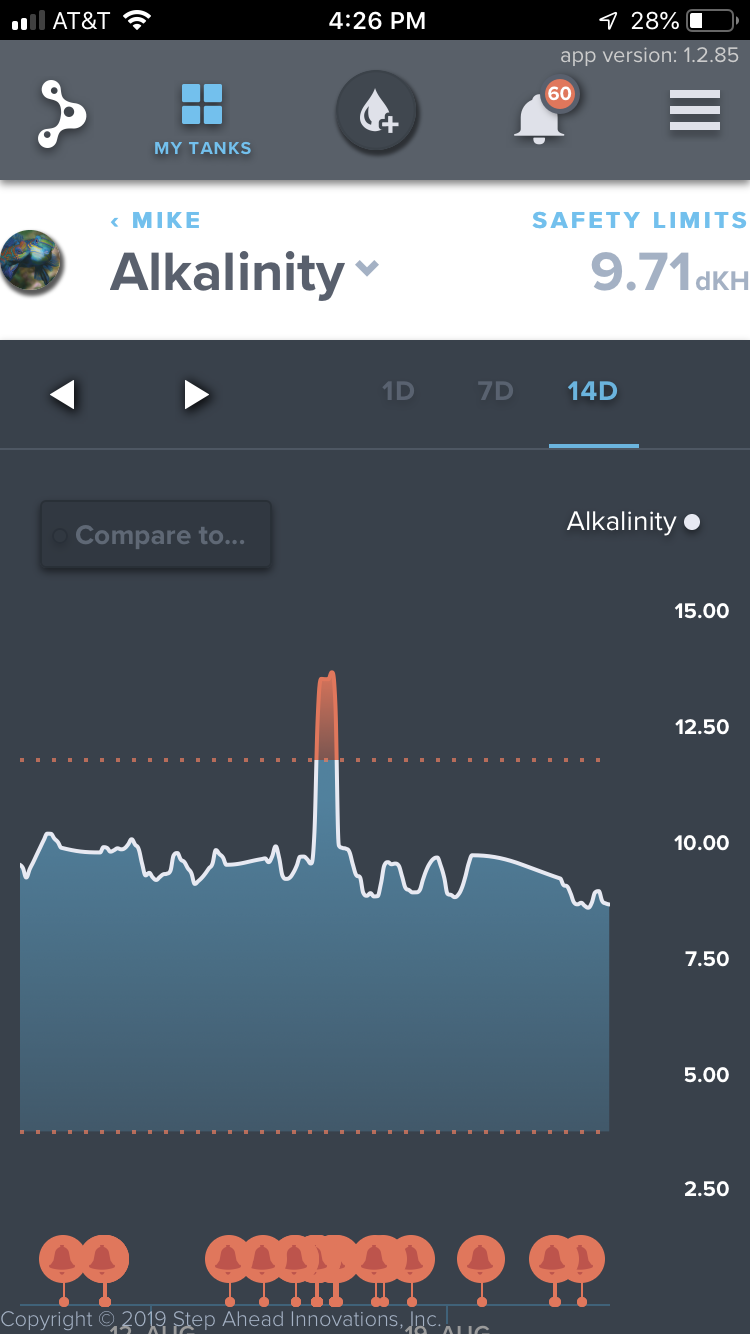
However, four of the guys who had worked on the tank called in sick, but no one thought much of it as the thought was that they were just taking a day off after working on Saturday. In addition, a couple of the other people in the office who had worked on the tank said they felt they were coming down with something, possibly the flu. The next day two of the people who had stayed home were in the hospital as were the two maintenance guys. At this point, everyone began wondering what had occurred to make so many people so sick.
After a week everyone was okay, and things had settled down, but why everyone got so sick remained a mystery. When this tank change was done, there was little understanding about palytoxin and how toxic it can be, nor even what caused it to be produced or how it could be taken up. A year after this tank change occurred a significant amount of coverage in the press occurred about palytoxin in aquariums and how potentially toxic it can be.
On looking back, it was realized that when the corals were removed from the live rock some of them including some palythoas, were torn from the rock. So even though they were only taken from the old tank, placed in new water, and then replaced in the new tank, this was enough to stress them and cause them to produce the toxin, which killed all of the fish.
On close analysis, it was determined that the guys who got sickest were also the guys who handled these corals directly. However, even the people who only touched the other corals that were in the same water as these also got enough toxins to get sick as well. Fortunately, we now know much more about these invertebrates what they can produce, and how to keep them from being stressed. But this experience shows that there can be unintended consequences in just about every activity in the hobby.
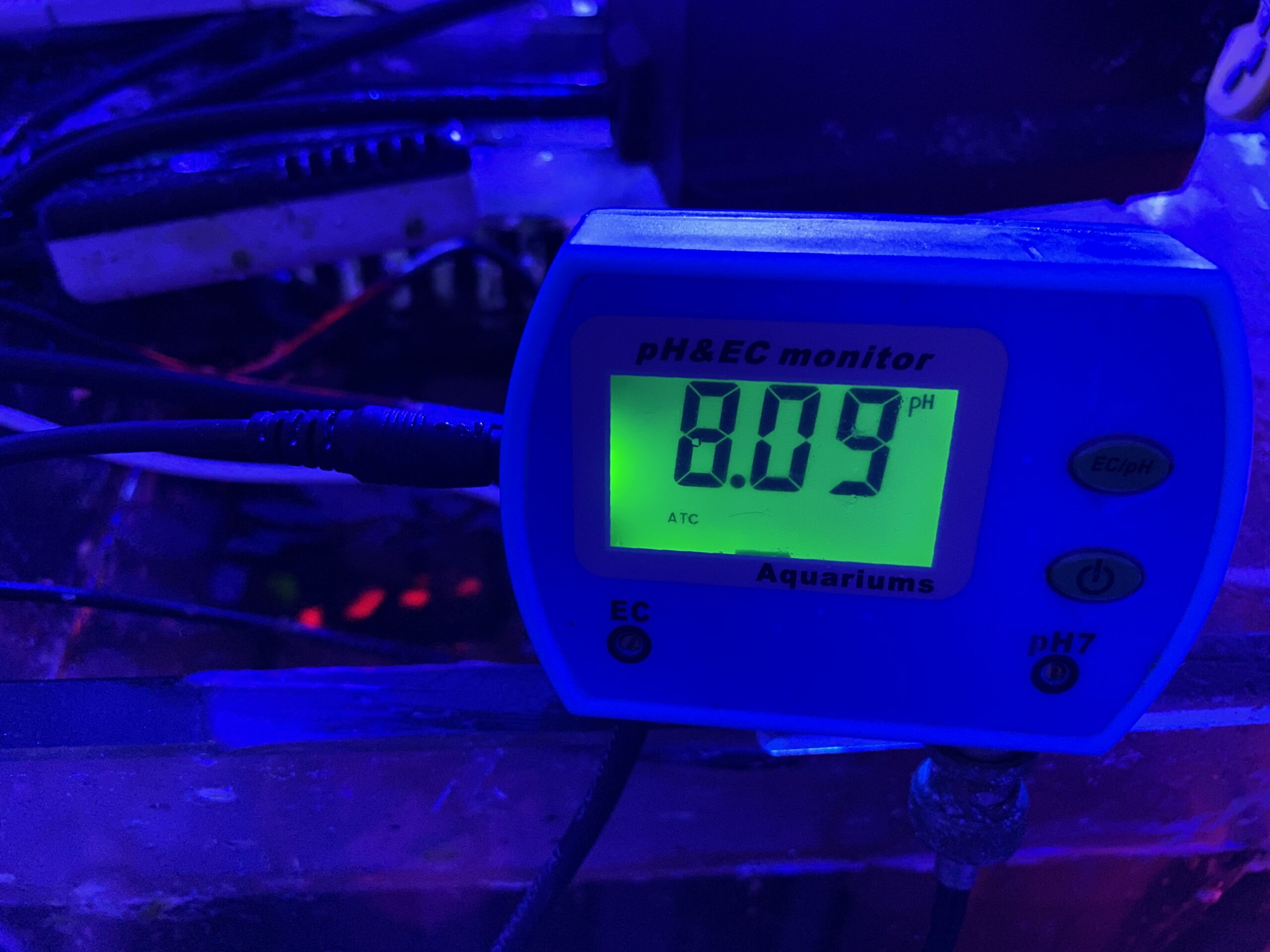
In this hobby, there is seemingly something that can go wrong, despite this I hoped to convey how we are all in this together and that even though there are some pitfalls to this hobby no one is alone. I wish I was perfect and did not encounter these problems, but that is one of the aspects that adds to my sense of community in having them happen and being able to share them. Sadly, there have been many more, and will be more in the future, I’m sure. But no matter how much they get me down, I know I have friends to share these experiences with.
